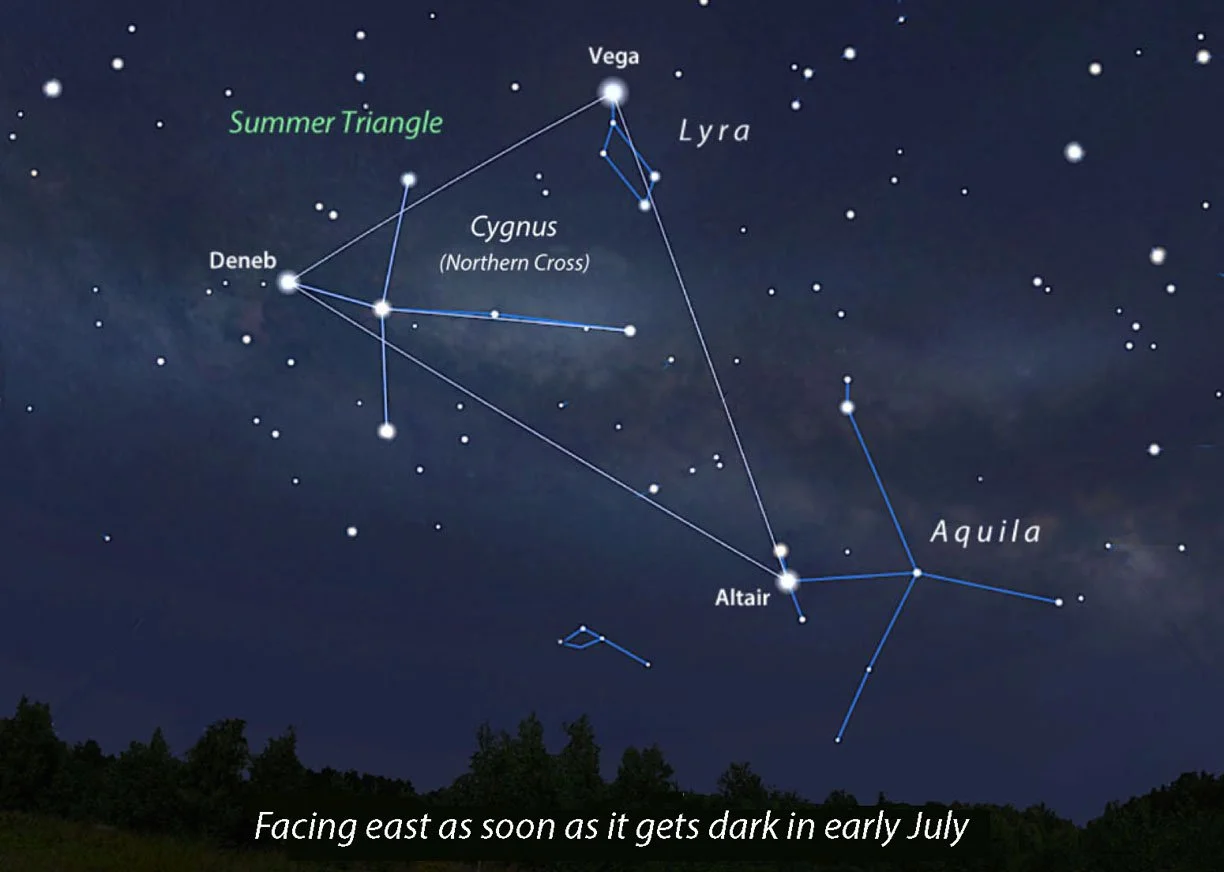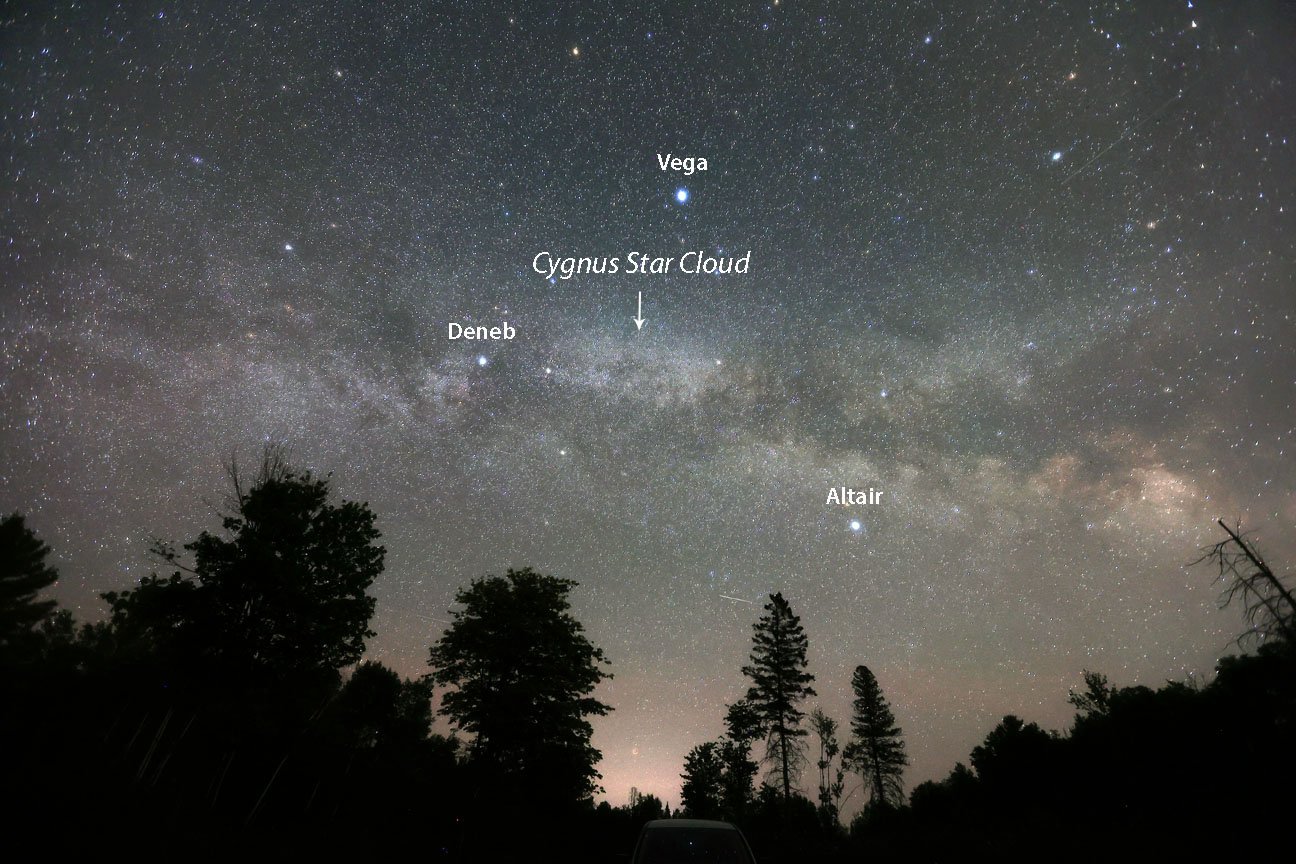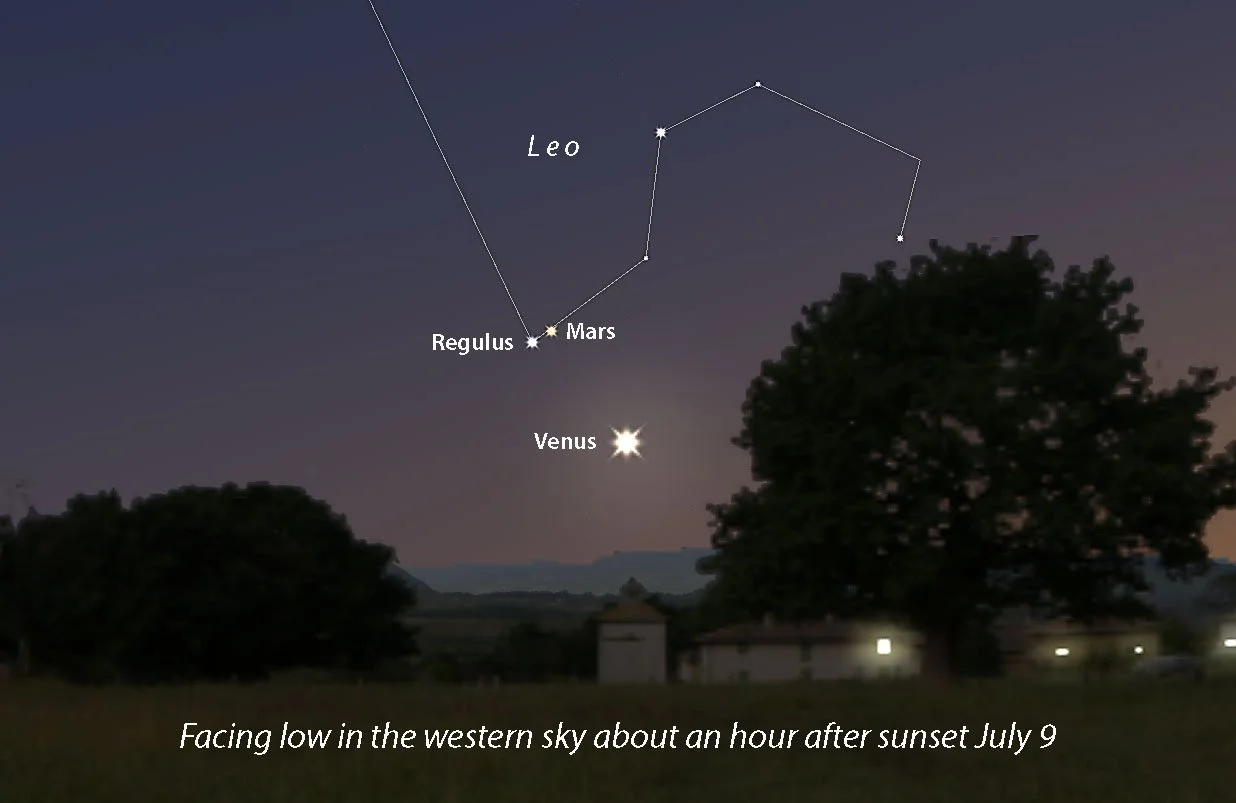July 2023 Night Sky Calendar
With both feet firmly planted in summer our eyes are free to roam the night sky in search of our favorite stars and constellations. The Big Dipper slides down from its lofty perch near the zenith to a more comfortable viewing position in the northwestern sky this month. The “W” constellation Cassiopeia, which hid behind low hills and trees in June, pivots higher in the northeast.
We welcome the Summer Triangle’s appearance in the east. Bright Vega in Lyra the Lyre (a small harp), Deneb in Cygnus the Swan and Altair in Aquila the Eagle outline the pizza-slice-shaped figure. On nights when the moon isn’t too bright, you’ll see the Milky Way cutting directly across the triangle. The easiest and brightest part of the band, the Cygnus Star Cloud, is centered on Cygnus, better known as the Northern Cross. Binoculars will reveal hundreds of stars shimmering in the stellar mist.
In the bottom half of the southern sky look for ruby-red Antares, the brightest star in Scorpius the Scorpion. Higher up in the southwestern sky Arcturus flashes orange and red. The fourth brightest star in the nighttime sky it gets its name from the ancient Greek arktos for “bear” and ouros for “watcher.” Arcturus follows behind the Great Bear (Big Dipper / Ursa Major) and keeps an eye on his whereabouts. Venus and Mars still hold sway in the western sky at dusk early in July, but both will disappear in the solar glare by month’s end. Mars will remain near the sun and invisible for some months, but Venus will return with its usual fire at dawn in August. Saturn rises in the southeast before midnight local time followed by brilliant Jupiter.
On July 1 st the giant planet comes up in the east around 2 a.m., but by month’s end it rises close to midnight. Nights are tightly compressed in July. Darkness gets underway well after 10 p.m. and before you know it, it’s dawn again. Summer sky- watching often means losing a little sleep, but the warm, fragrant nights, orange moon and star-soaked Milky Way conspire to make it all worthwhile.
Events:
July 3 – Full Buck Moon. Named for male deer which are growing their antlers this time of year. This full moon occurs a day before lunar perigee, when the moon is closest to Earth, so it will appear a little brighter and larger than usual.
July 7 – Venus brightest of the year in the evening sky. Magnitude −4.7. In steadily held 7x or 10x binoculars it looks like a tiny crescent moon all month.
July 7 (early a.m.) – Waning gibbous moon and Saturn in conjunction 3.5° apart. Best from 12:30 a.m. till dawn local time.
July 9 – Last quarter moon rises around midnight in Pisces.
July 9 – Mars and Regulus in conjunction just 0.5° apart at dusk. Use Venus, located 4.5° to the lower right, to find the pair. Binoculars will help in case twilight interferes and clearly show their contrasting colors.
July 11 (early a.m.) – Thick waning crescent moon shines about 5° to the right (west) of Jupiter this morning.
July 13 (early a.m.) – Early risers’ special! Thin crescent moon shimmers just 2° below the Pleiades star cluster. Best views from 3 a.m. till dawn local time. Binoculars will make this an especially beautiful sight.
July 17 – New Moon
July 18 – See the extremely young moon — just 1.3 days old — very low in the west-northwest sky 25 to 45 minutes after sundown. Mercury glimmers 5° to its left (south). You’ll need binoculars to nail the planet.
July 20 – Waxing crescent moon in conjunction with Mars. Look about 3° to the moon’s lower left to find the fading planet.
July 24 – Waxing moon 2° above and right (northwest) of Virgo’s brightest star Spica tonight.
July 25 – First quarter moon. Half-moon due south around sunset.
July 27 – Last sighting of Venus at dusk? Try looking with binoculars just above the western horizon about 20 minutes after sunset.
Bob King is an amateur astronomer, author, and passionate educator. He served as a photographer and photo editor at the Duluth News Tribune for 39 years and taught at the UMD planetarium. Bob’s work had a great impact on Voyageurs National Park. To achieve International Dark Sky Park certification, the park was required to host dark sky education events. Through the Night Sky Explorer webinars, the Conservancy was able to fulfill this component and help secure the certification for Voyageurs National Park. We can’t thank Bob King enough for sharing his talents and knowledge with the Conservancy community to support dark sky preservation.





